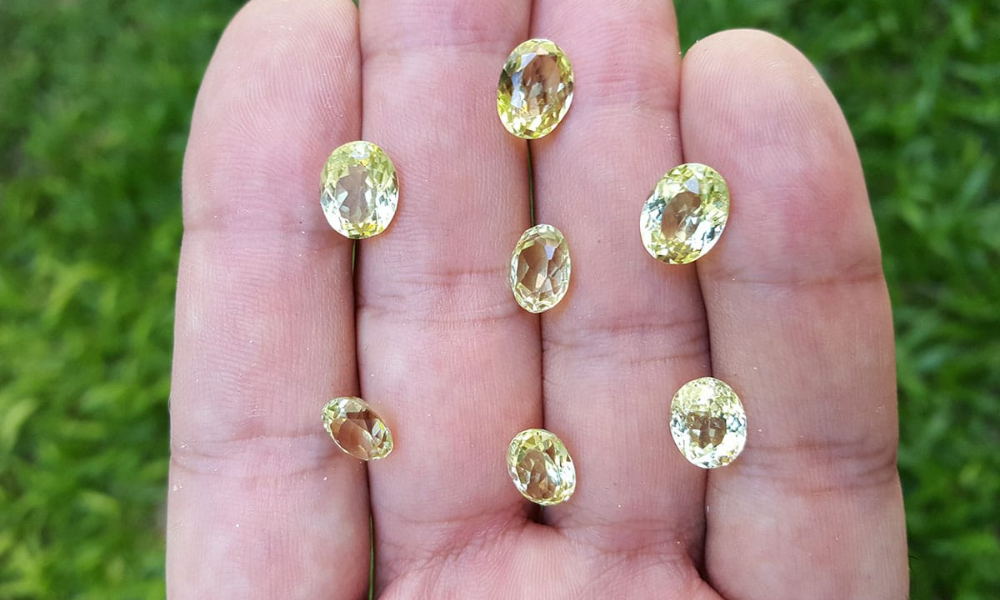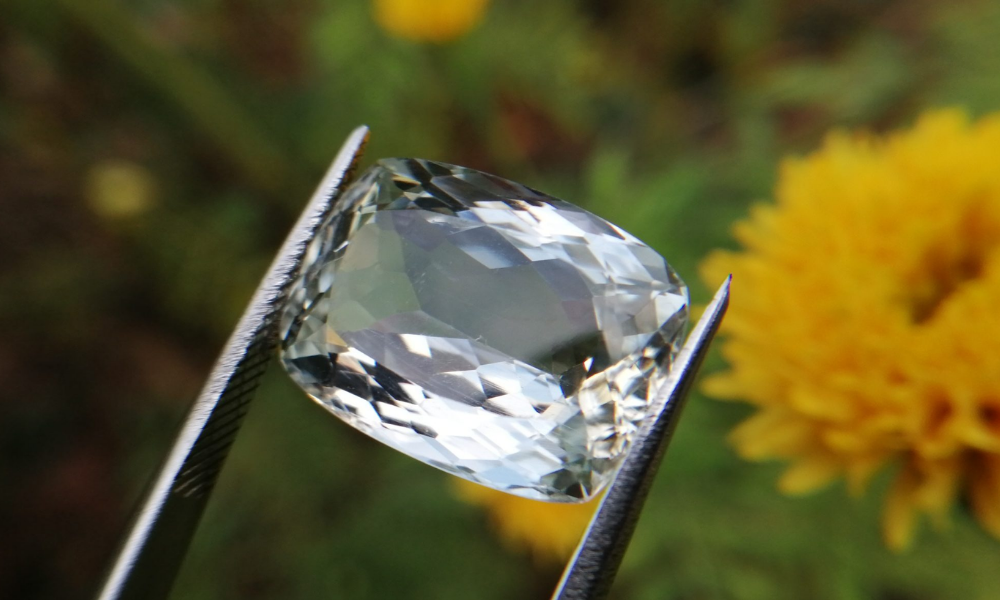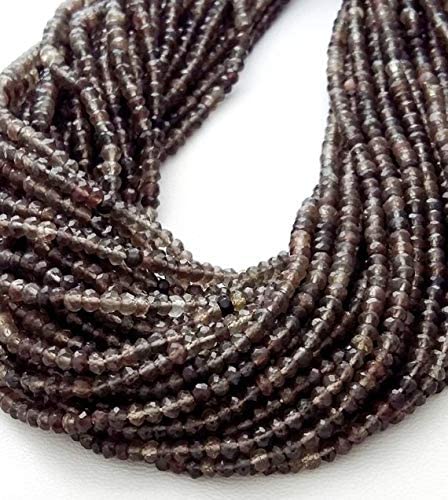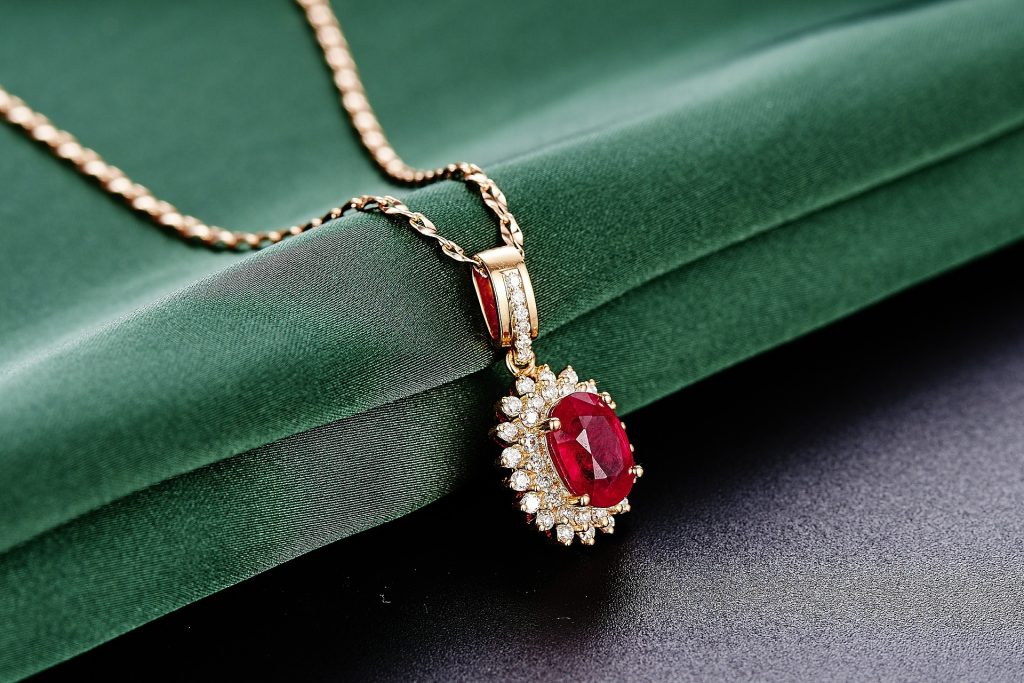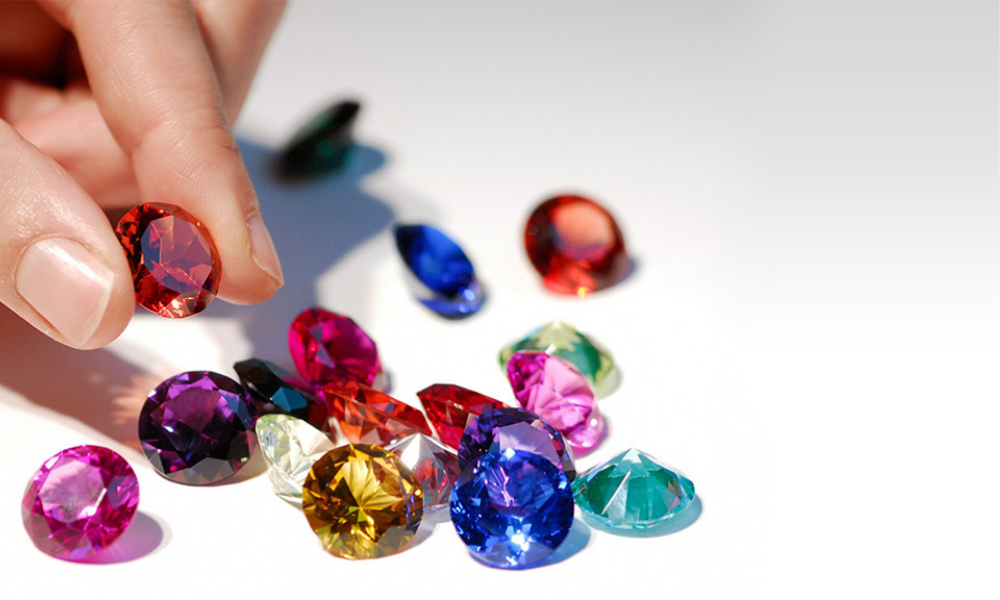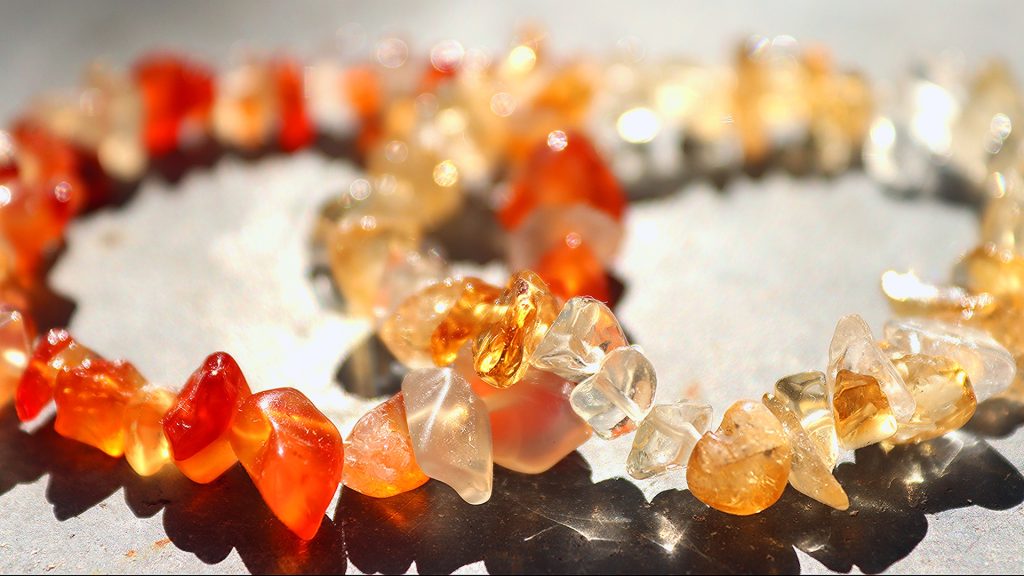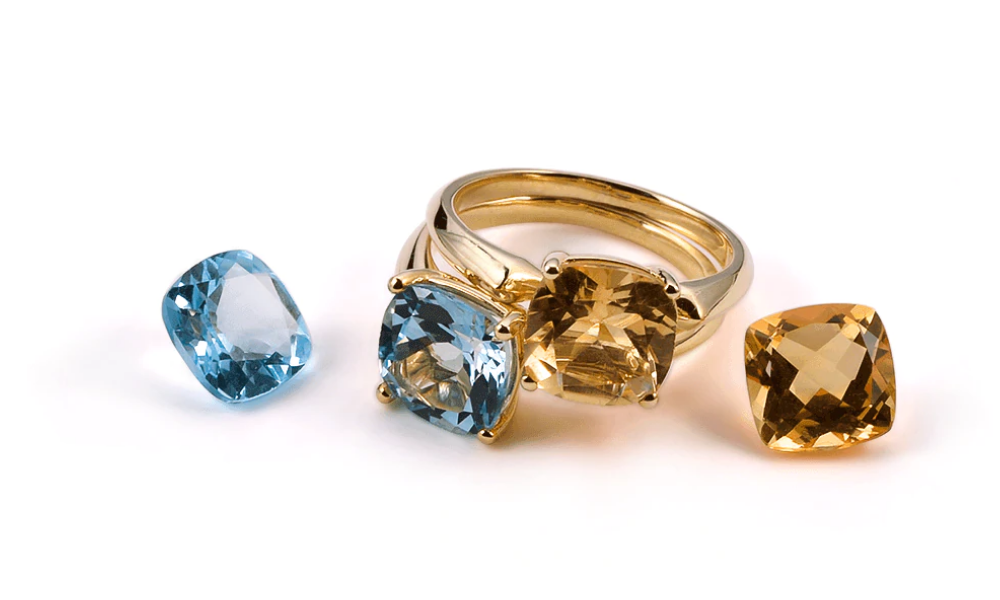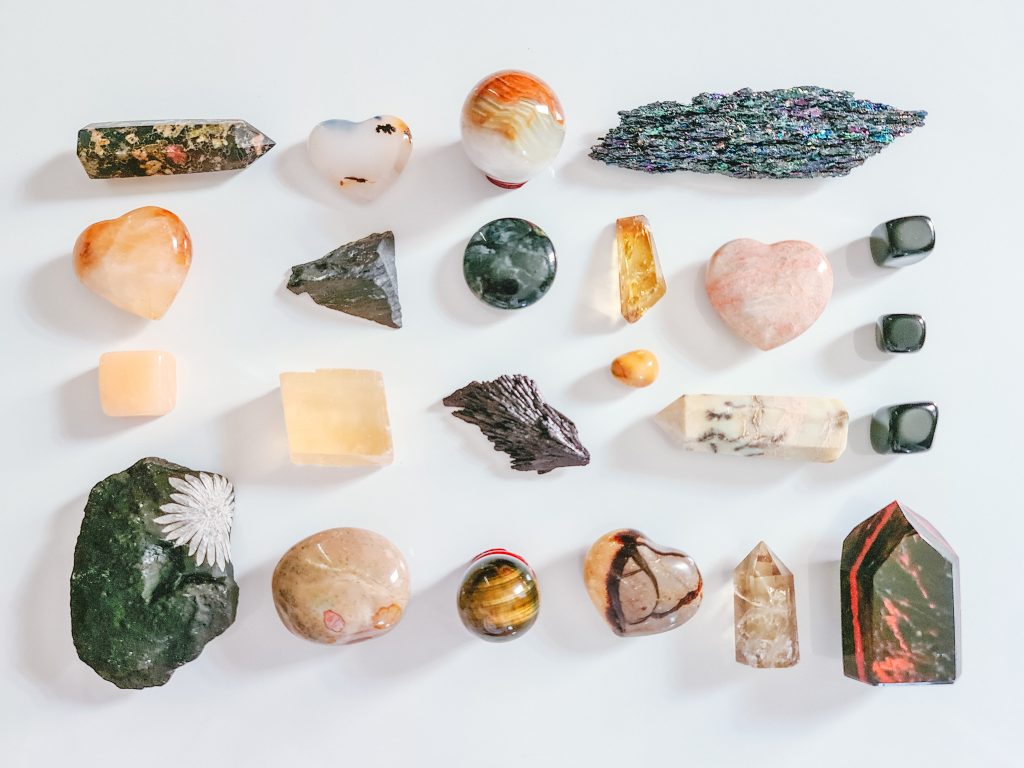If you’re wondering what the sillimanite gemstone is, you’re not alone in your curiosity about it! There are several different varieties of this highly unique gemstone. Sillimanite (also known as Fibrolite) is found in various colors, including green, yellow, brown, blue, white, and even black. It can be found in various sizes and shapes. Kyanite and Andalusite are two other minerals that are ‘polymorphs,’ which means that they have the same chemical but different crystal structures.
Like Kyanite, this precious stone is challenging to facet because of its brittleness and directional cleavage, both of which are present. Due to the scarcity of Sillimanite and the difficulty in cutting it, this gemstone has a tremendous value after it has been correctly faceted. The stone is a complete Jekyll and Hyde; it can be found as an utterly transparent gem or an utterly opaque gem with a waxy sheen, depending on the lighting conditions. The diamond was given its name in honor of geologist Benjamin Silliman, who passed away recently.
What is Sillimanite Gemstone?
Sillimanite is an exceedingly rare and lesser-known collector’s gem worth its gold weight. Sillimanite is formed of aluminum silicate, which is a polymorph; Sillimanite, Kyanite, Andalusite, and other silicate minerals all have the same chemical composition (Al2SiO5), but each has a distinctive crystal structure that is distinct from the others. While sillimanite crystals are created as orthorhombic, hexagonal crystals, the crystals of Kyanite and Andalusite are formed as triclinic crystals, respectively. Sillimanite is the rarest of these three closely related compounds, and it is also the most expensive. Kyanite is recognized for its variable hardness, and it occurs at significantly greater temperatures and pressures than Sillimanite, which is why it is more challenging to work with. In the same way that Andalusite exhibits pleochroism, Sillimanite may also exhibit pleochroism, albeit to a lesser extent than in Andalusite.
Sillimanite is also the only alumino-silicate with cat’s eye chatoyancy discovered. Cat’s eye chatoyancy is an unusual optical phenomenon that only happens in a few gem-quality materials. It’s a beautiful quality that gem lovers and jewelry makers cherish and seek out. When a gem is aligned correctly and viewed under intense lighting, a light reflection resembling a cat’s slit eye seems to float or glide across the stone’s surface. Fibrous needle-like inclusions completely aligned in parallel patterns are responsible for the cat’s eye reflection. Without magnification, a fibrous cat’s eye sillimanite can show visible twisting of fibrous bunches. This fibrous sillimanite variation may be marketed as ‘fibrolite,’ though it is not a widespread trade name outside of collector circles.
Sillimanite is an ideal material for the gem and jewelry industry and a variety of industrial applications due to its extraordinary durability and resistance to high heat and chemical corrosion. Sillimanite was a common substance used by Native Americans to make implements for many years. Because of its hardness and durability, Sillimanite is an excellent material for shaping other materials. Because of its ability to retain strength even at very high temperatures, Sillimanite is an ideal material for alumina refractories, though other, less expensive materials such as dumortierite and mullite (porcelainize) are generally favored for mass commercial production because good quality sillimanite is much more expensive. In addition to being used in the manufacture of alumina bricks, cement, ceramics, and fine porcelain, Sillimanite is also utilized in the smelting of steel and iron and the production of industrial quality glass.
Sillimanite Origin and Sources
Sillimanite was once thought to be scarce and only found in a few places on the planet. Sri Lanka (Ceylon), Myanmar (Burma), Kenya, and the United States were identified as the most prominent sources. Sillimanite has become less rare due to a recent discovery in India. It is still a collector’s gem, and only a few people who aren’t in the gem industry are familiar with the name. European regions and all of the previously mentioned sources are modern-day sources for Sillimanite, with India providing the majority of the material on the market today.
Even though Sillimanite was found in Connecticut, the US state of Delaware designated it as its official state mineral. Wyoming and South Carolina are also good places to look for Sillimanite in the United States. Burma’s Mogok region and Sri Lanka’s gem gravel sources were recognized for producing high-quality material, including a rare light-blue and colorless sillimanite variant. Because practically all material has some impurities that generate the coloring of gemstone-quality deposits, transparent Sillimanite, mainly colorless Sillimanite, is exceptionally rare.
Sillimanite Color
Sillimanite is generally greyish to brown in non-gemstone deposits, with certain exceptions. Rarer colors frequently utilized as gemstones include bright yellow, greenish-yellow, light-bluish, violet to purplish-brown, and light-bluish-purplish-brown. Transparent Sillimanite is commonly greenish to yellow in hue. However, it can be colorless or pale blue in rare instances. Most translucent to nearly opaque gemstones are dark greyish to greenish-brown in Colour, with certain exceptions.
Depending on the angle from which it is seen, some sillimanite will exhibit a variety of hues. Even while its pleochroism is not as severe as Kyanite or Andalusite, thin Sillimanite may frequently flash yellow, green, and blue when viewed from various angles. This is more common in faceted gemstones than in cabochon sillimanite jewels, but it can be seen in both. Generally speaking, a cat’s eye sillimanite is brownish, and high-quality gemstones can have a pronounced violet color to them.
Sillimanite Clarity and Luster
Sillimanite of gem-quality is usually translucent, and transparent Sillimanite is quite unusual. Even Sillimanite that appears opaque in tiny slices is translucent in thin slices, allowing some light to flow through. Cat’s eye sillimanite is generally translucent, but the thick depth and orientation required to get the desired cat’s eye impression make it appear impenetrable. Sillimanite is sometimes sold under the trade name ‘fibrolite,’ which shows as obviously twisted fibrous material in gemstones with fibrous morphology. Chatoyancy (the cat’s eye effect) is most commonly seen in the fibrous form. Sillimanite has an appealing sheen that ranges from vitreous (glass-like) to silky when cut and polished.
Sillimanite Cut and Shape
Because translucent material is scarce, Sillimanite is rarely faceted. Since collectors prize the material, transparent sillimanite minerals are often yellow to green-yellow and are virtually always faceted. In most cases, Sillimanite is not cut with the idea of being used in jewelry; instead, it is cut for display purposes only, even though it is perfectly suitable for most jewelry designs due to its comparable durability to quartz. Sillimanite is translucent to a near-opaque mineral that ranges in hue from greyish to violet-brown. Those with fibrous parallel-aligned inclusions will be cut in the typical cat’s eye shape; en cabochon. Ovals are the most frequent shape because they conserve the maximum carat weight, which is vital to consider when working with rare gemstone materials.
Experienced gem cutters will take extra precautions to ensure that the cat’s eye chatoyancy is centered. It is oriented to maximize chatoyancy to be visible even in low-light conditions. Almost all sillimanite cabochons are cut with a high dome, and the bottoms are usually left unpolished or only lightly polished to allow them to be bonded to rings and other jewelry designs. Although calibrated gemstones are extremely rare, standard-sized ovals can be found, especially in matching pairs or sets. Cabbed sillimanite diamonds are usually slightly uneven, which is expected unless the overall shape is out of the ordinary.
13 inch Natural Beads Strand of 3-3.5mm Faceted rondelle Sillimanite Gemstone Beads for DIY Jewelry – Necklace, Bracelet, Earring, Ring
Features
- GEMSTONE TYPE / NAME :- sillimanite
- BEADS SIZE :- 3-3.5mm
- BEADS SHAPE :- rondelle
- BEADS CUT :- faceted
- STRAND TYPE & LENGTH :- beads / 13 inch
How do you Identify Sillimanite?
Sillimanite is a metamorphic mineral found in high-grade aluminous schists and gneisses, as well as other metamorphic rocks. It is a polymorph of Andalusite and Kyanite, all of which have the formula Al2SiO5, and it is found in nature. High relief, needle-like habit, fibrous or bladed behavior, and unique square cross-sections with one diagonal cleavage are all characteristics of this species.
When examined in a thin section or even with the naked eye, Fibrolite is a frequent variant of Sillimanite. The mineral was given its name because it looks like a tangle of fibers knotted together when viewed with the naked eye. Both the fibrous and conventional forms of Sillimanite can be found together throughout metamorphosed sedimentary rocks.
What Colour does Sillimanite come in?
Yellow, brown, and blue Sillimanite are the three colors found in Sillimanite. The yellow tint of genuine single crystals of Sillimanite found in high-grade metamorphic rocks and accompanying pegmatites is a feature of the mineral.
Sillimanite, also known as Fibrolite, is a brown, pale green, or white glassy silicate mineral that occurs in long, slender needle-like crystals usually found in fibrous aggregates. It can be found in brown, pale green, or white glassy silicate minerals.
Is Sillimanite Rare?
Sillimanite was named after Benjamin Silliman (1779-1864), a geologist and professor at Yale University in the United States. It is a highly uncommon and wonderfully gorgeous gemstone.
It is found in various high-grade metamorphic rocks and ranges in composition from 0-13 to 1-82 weight percent Fe2O3, with less than 0-1 weight percent TiO2 in the Sillimanite. The iron is trivalent, and it can only substitute for aluminum.
Is Sillimanite a Polymorphic Substance?
Among the three aluminosilicate polymorphs known, Sillimanite is one of the most common, and the other two are Andalusite and Kyanite. When examined in a thin section or even with the naked eye, Fibrolite is a frequent variant of Sillimanite. The mineral was given its name because it looks like a tangle of fibers knotted together when viewed with the naked eye.
Conclusion
Sillimanite is a rare and valuable stone that has a one-of-a-kind beauty. It was named after the American geologist Benjamin Silliman. This stone is thought to increase mental vitality, which is particularly beneficial for persons who have low self-esteem. It can help people enhance their analytical and problem-solving abilities and even protect them from wrongdoing. People with low self-esteem and hesitation commonly seek after it since it can help them gain self-confidence and encourage them to take the appropriate action. Someone with solid willpower can make intelligent judgments and achieve success in life when they have the Sillimanite gemstone in their jewelry box.

